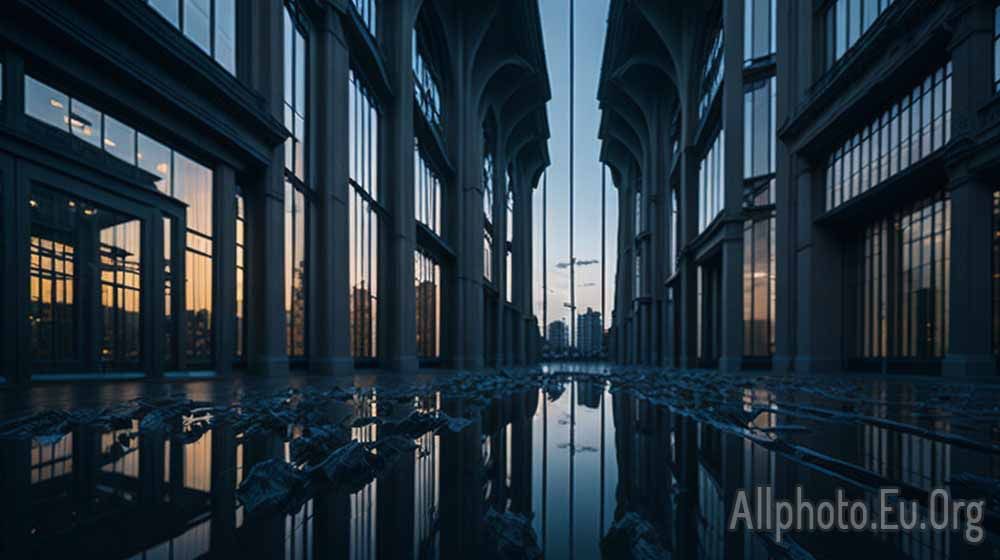The Role of Symmetry in Photography: Creating Balance and Harmony

Photography is an art that captures the beauty of the world around us. Whether it's capturing a breathtaking landscape, a stunning portrait, or a unique moment in time, photographers strive to create visually compelling images that tell a story. One of the key elements that can help photographers achieve this goal is symmetry. In this article, we will explore the role of symmetry in photography, and how it can help create balance and harmony in your images.
Symmetry is a fundamental principle of design, and it has been used by artists and designers for centuries to create aesthetically pleasing compositions. In photography, symmetry is the visual balance of elements in an image that creates a sense of harmony and equilibrium. When a photograph is symmetric, the subject matter is arranged in such a way that there is a sense of balance and order, making the image more pleasing to the eye.
There are several types of symmetry that photographers can use to create balance and harmony in their images. The most common type of symmetry is bilateral symmetry, where an image is divided into two identical halves. This type of symmetry is often seen in landscapes, architecture, and portraits, where the subject is centered in the frame and reflected on either side. Another type of symmetry is radial symmetry, where the elements of an image are arranged around a central point, creating a circular or spiral pattern. This type of symmetry is often used in nature photography, where the subject is a flower, a shell, or a leaf.
One of the benefits of using symmetry in photography is that it can create a sense of calm and order in an image. When a photograph is balanced and harmonious, it can evoke a sense of tranquility and peace in the viewer. This is particularly useful in portrait photography, where a symmetrically composed image can help the viewer connect with the subject on a deeper level.
Another benefit of using symmetry in photography is that it can help draw the viewer's eye to the subject of the photograph. When an image is symmetrically composed, the viewer's attention is naturally drawn to the center of the frame, where the subject is located. This can be particularly useful in landscape photography, where a symmetrically composed image can help emphasize the grandeur and beauty of the natural world.
Symmetry can also be used to create a sense of tension and drama in an image. When an image is symmetrically composed, it can create a sense of anticipation in the viewer, as they wait for something to happen in the frame. This can be particularly effective in street photography, where a symmetrically composed image can capture the energy and chaos of urban life.
When using symmetry in photography, it's important to be aware of the potential pitfalls. One of the biggest challenges of using symmetry is that it can be too predictable and static. When an image is perfectly symmetrical, it can lack depth and interest, as there is no visual tension or contrast to capture the viewer's attention. To avoid this, it's important to experiment with different types of symmetry, and to incorporate other design elements, such as texture, color, and shape, to create a more dynamic and visually engaging image.
In conclusion, symmetry is an essential tool for photographers who want to create balance and harmony in their images. By using symmetry in a thoughtful and deliberate way, photographers can create images that evoke a sense of tranquility, draw the viewer's eye to the subject, and capture the drama and energy of the world around us. So next time you're out with your camera, take a moment to consider how symmetry can help you create more compelling and visually engaging photographs.
Here are some practical tips for incorporating symmetry into your photography:
- Pay attention to your surroundings: When composing a photograph, take a moment to look around and identify any symmetrical elements in the scene. This could be a line of trees, a row of buildings, or even a reflection in a body of water.
- Experiment with different types of symmetry: Try using bilateral symmetry, radial symmetry, or even diagonal symmetry to create a more dynamic image.
- Don't forget about other design elements: While symmetry is an important tool, it's important to also consider other design elements, such as texture, color, and shape, to create a visually engaging photograph.
- Use editing software to enhance symmetry: If you find that your image isn't perfectly symmetrical, you can use editing software to adjust the composition and create a more balanced image.
- Don't be afraid to break the rules: While symmetry is a great tool, it's important to also experiment and break the rules to create unique and engaging images. Don't be afraid to try something new and see where it takes you.
In conclusion, symmetry is an important tool for photographers who want to create balance and harmony in their images. By incorporating different types of symmetry into your compositions and considering other design elements, you can create visually engaging photographs that capture the beauty and drama of the world around us. So the next time you're out with your camera, take a moment to experiment with symmetry and see where it takes you.
In summary, symmetry in photography is a powerful tool for creating balance and harmony in your images. Whether it's using bilateral, radial, or diagonal symmetry, incorporating symmetry can help draw the viewer's eye to the subject, create a sense of calm or tension, and capture the beauty of the world around us. However, it's important to also consider other design elements and experiment with breaking the rules to create unique and engaging photographs. With these tips in mind, you can use symmetry to take your photography to the next level.
Tags
Latest Articles
Most Read
All Tags
Subscribe
Donate
Please consider supporting our efforts.
© 2023 All-Photo.Cf All rights reserved.










